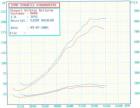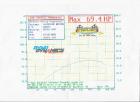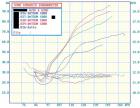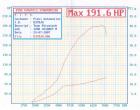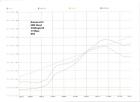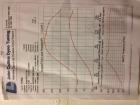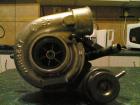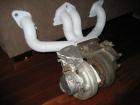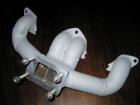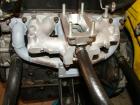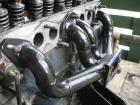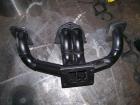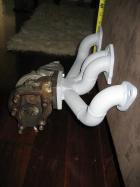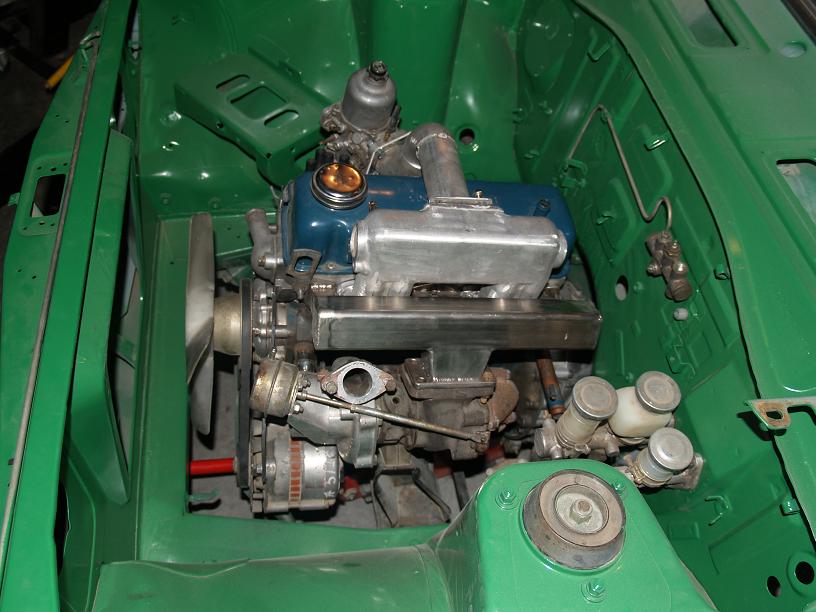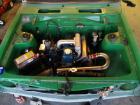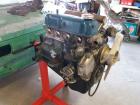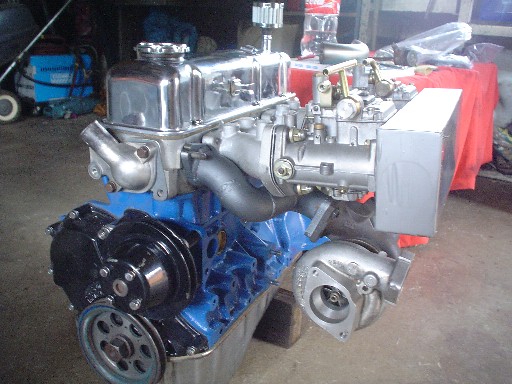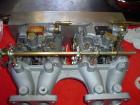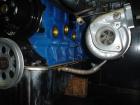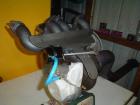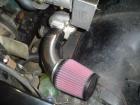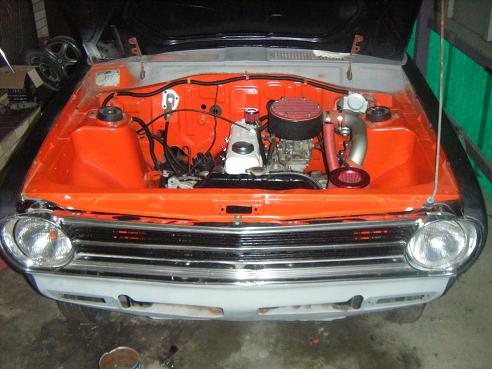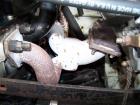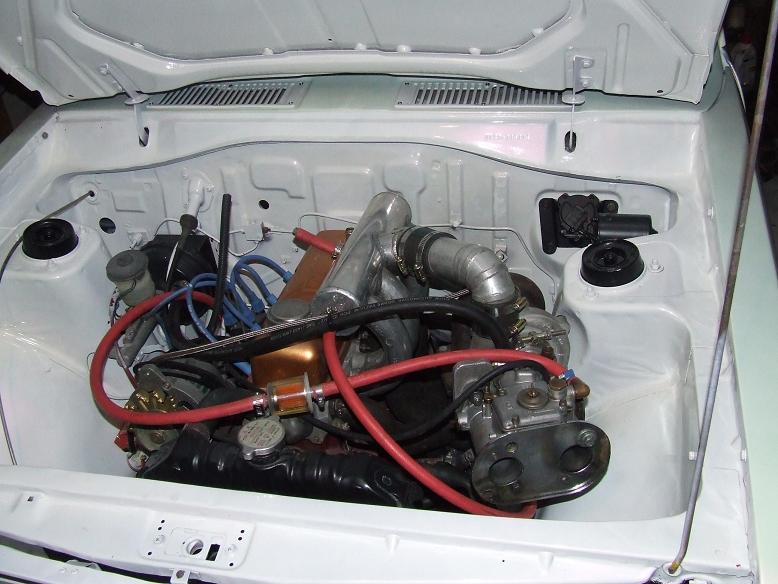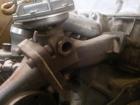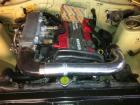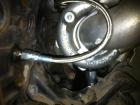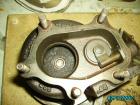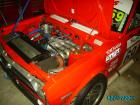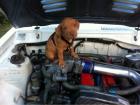| Revision as of 03:50, 17 May 2016 ddgonzal (Talk | contribs) (->Draw-through or blow-through turbo systems?) <- Previous diff |
Revision as of 07:53, 18 May 2016 ddgonzal (Talk | contribs) (->Intercooler) Next diff -> |
||
| Line 116: | Line 116: | ||
| * Using an aluminum radiator should be better than nothing. Unless someone actually tested this, we are all just guessing. Radiators can flow a lot of water, and air is easier to pump ... so air should flow through w/o significant restriction. Putting this in front of the car should allow some cooling effect, although obviously not as a much as a purpose-designed cooler. | * Using an aluminum radiator should be better than nothing. Unless someone actually tested this, we are all just guessing. Radiators can flow a lot of water, and air is easier to pump ... so air should flow through w/o significant restriction. Putting this in front of the car should allow some cooling effect, although obviously not as a much as a purpose-designed cooler. | ||
| * An alternative is to use water or alcohol injection. Some OEM applications used water injection (ex. 1962 Oldsmobile Jetfire) | * An alternative is to use water or alcohol injection. Some OEM applications used water injection (ex. 1962 Oldsmobile Jetfire) | ||
| + | |||
| + | = Water Injection = | ||
| + | An alternative to an intercooler is to use water or alcohol injection. Some OEM applications used water injection, for example the 1962 Oldsmobile Jetfire injected water/alcohol mix. | ||
| + | |||
| + | Into the air filter is quite effective for a suck through turbo. It not only cools the air fuel mixture but also cools the compressor wheel and that helps the ADI atomise also. But there is a problem with this system, water WILL pit the compressor wheel over time and over time wear out the turbo faster. | ||
| + | <br><img size=400>http://datsun1200.com/uploads/photos/7161.jpg</img> [http://datsun1200.com/modules/myalbum/photo.php?lid=7161 album] | ||
| + | |||
| + | ADI tank can use a pump to spray liquid into the system (see discussion about [http://datsun1200.com/modules/myalbum/photo.php?lid=7131 eliminating the pump]) | ||
| + | <br><img size=400>http://datsun1200.com/uploads/photos/7157.jpg</img> [http://datsun1200.com/modules/myalbum/photo.php?lid=7157 album] | ||
| = Wastegate = | = Wastegate = | ||
Revision as of 07:53, 18 May 2016
Forced induction comes in two forms: Supercharging and Turbo-supercharging. This article will focus on the turbocharger. For a comparison with the supercharger, see Forced Induction.
Stage 1
20% more HP than stock.
A stock A-series engine can take 10 psi. You don't even need an intercoolor, and so you can use draw-through on a stock carburetor. But blow-through is easier.
- Stock engine
- Loop piping from stock exhaust manifold
- Small Wrecking yard turbo ($100). If sized small enough, no wastgate or blow-off valve is needed
- Tee into the oil pressure line, feed it into turbo. Tap a return line into the oil pan
- Piping from turbo to stock carburetor via a top hat
- Set initial timing at 3 degrees
- In the distributor, weld the advance slots partially to limit mechanical advance
- Keep the stock vacuum advance (it will have no effect under boost)
- Fit larger power valve to carburetor
- Fit secondary main jet two sizes larger
- Stock fuel piping with medium pressure fuel pump (above 10 psi)
Limit boost to 5 psi.
Or go to 10 psi for short bursts on cooler days.
Stage 2
10 psi. 40% more HP.
- stock block and head
- Fit Intercooler (precludes use of draw-through)
- Box the carburetor to go higher than 10 psi
- Rejet primary main two sizes larger. Secondary main 3 sizes larger. Power valve increase.
- Retard timing to 0 degrees. Connect vacuum advance up directly to manifold. This will help idle and starting out under low throttle, but the vacuum advance will have no effect under boost
- Use 75.5-degree thermostat
- High volume/high pressure fuel pump
- anti-surge tank up front
- Use custom exhaust manifold to mount the turbo
- 2" exhaust
- H165 rear axle
Stage 3
100% more HP than stock. Requires modified engine, but not high-RPM usage.
2 bar (28.2 psi)
1 bar (14.7 psi)
Do all the stage 2 modifications plus:
- Use new Nissan rod bolts, torque to spec
- Use ARP head studs
- Fit Intercooler (precludes use of draw-through)
- Custom pistons for low compression (7:1)
- A12GX head, ported
- Copper head gasket
- Oil Cooler
- EFI (or professionally modified & tuned box carburetor)
- custom inlet manifold with large runners
- 2.5" exhaust
- Carefully-sized ball bearing turbo
- 5/16" fuel lines and high volume/high pressure fuel pump
- Fuel tank modified with baffles, or anti-surge tank up front
- Custom-recurved distributor with Electronic Ignition
- Spark retard system
- Water-injection system
- 63-Series Transmission for A-series
- Heavy duty clutch
- H190 rear axle (or H165 rear axle with heavy-spline axles)
- traction bars
Proof
A15ETT
See main article: A15ETT
Twin-turbo A15 by 1200rallycar A15 Before: 52.3 kw (70.1 hp) A15 After: 75.6 kw (101.4 hp)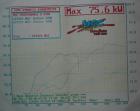
Sikyne's A12
See: A12 Turbo Development thread 160+ rwhp @ 15 lbs boost(standard H89 Head) 240+ rwhp @ 24 lbs boost(big valve ported head) 2nd-hand GT2860R (707160-5) ball bearing turbo E85 fuel, intercooled stock and unmodified H89 head Cam: 236Deg at .050 Maximum advance at 16 psi boost: 23 degrees ARP head studs stock pistons, crank and rods standard headgasket about 120FtLb from 5100 to 6800 RPM @ 15 psi
Draw-through or blow-through turbo systems?
Section by datto_dave
The carburettor can be mounted in two positions on a turbo-charged engine, and a great deal of controversy exists as to which is better. The carburettor can be mounted such that it feeds air into the turbo then the turbo feeds it to the engine. This is known as a Draw-Through system. Under these conditions the carburettor operates more or less as it would on a naturally asperated engine. Another school of thought says that the carburettor should be mounted between the turbocharger and the intake manifold. This means that the turbocharger draws fresh air and pumps it into the carburettor, which then feeds the fuel/air mixture to the engine. This blow-through setup allows the use of an intercooler, which draw-through does not. In fact there are several advantages to a blow through over a draw through, because the fuel/air does not have to travel through the turbo. The blow through system requires a boost sensitive rising rate fuel pressure regulator in order to increase fuel pressure with boost pressure as the rpms rise.
Blow-through system feeding Boxed carburetor
 album
album
Another snag to the blow-through system is that the carburettor must be enclosed in a pressure box and the fuel supplied to the carburettor must be at a suitable pressure above the boost pressure. This means the fuel pressure has to be regulated in accordance with the boost pressure at all times. My own personal preference to date has been for the draw-through system this is largely substantiated by other people in the industry who are running very high-powered turbocharged cars. Almost all are using draw-through systems. However, the speed equipment industry doesn’t stand still. A new development with blow through systems could change the picture. The specially designed for ‘blow-through turbo applications Dellorto side draught carburettors may well be that development.
Blow-through system feeding carb top-hat
 album
album
A third possibility exists: fuel injection. Here, the injection system has to be designed to measure the amount of air going into the turbocharger by whatever means. It then injects the correct quantity of fuel into the engine at whatever point is convenient. The butterflies for throttling the engine may be situated either prior or after the turbocharger, depending on ease of installation layout. If the injectors are situated in such a position that they injected into a high pressure boosted environment, then the injection pressure must be compensated for by whatever pressure the boost level has reached. Fortunately most fuel injection systems have ample fuel pressure to cope with as high as 40-45 psi used in alcohol burners.
Intercooler
An Intercooler is not needed. The first three years of the Porsche 911 Turbo didn't have one (75-77), yet this 3.0 liter turbo outperformed 7.5 liter NA cars. However there are very good reasons to use an intercooler, including:
- Intercooler is worth it as it significantly reduces the temperature of the compressed air, which increases the boost possible with a given octane fuel
- Using an aluminum radiator should be better than nothing. Unless someone actually tested this, we are all just guessing. Radiators can flow a lot of water, and air is easier to pump ... so air should flow through w/o significant restriction. Putting this in front of the car should allow some cooling effect, although obviously not as a much as a purpose-designed cooler.
- An alternative is to use water or alcohol injection. Some OEM applications used water injection (ex. 1962 Oldsmobile Jetfire)
Water Injection
An alternative to an intercooler is to use water or alcohol injection. Some OEM applications used water injection, for example the 1962 Oldsmobile Jetfire injected water/alcohol mix.
Into the air filter is quite effective for a suck through turbo. It not only cools the air fuel mixture but also cools the compressor wheel and that helps the ADI atomise also. But there is a problem with this system, water WILL pit the compressor wheel over time and over time wear out the turbo faster.
 album
album
ADI tank can use a pump to spray liquid into the system (see discussion about eliminating the pump)
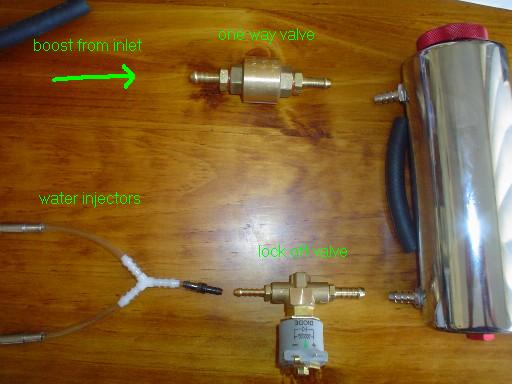 album
album
Wastegate
A Wastegate is used for adjustable control over boost pressure. When the set pressure is exceeded, exhaust is routed around the turbine to go out the tailpipe
- Not needed if you carefully size the turbo to the application (ensuring that at maximum rpm, design boost is not exceeded). Older OEM applications used this method.
Blow-off valve (or recirculation valve)
A Blow-off valve is used to preventin the turbo from surging, for example during gear shift or whenever throttle is closed. Porsche uses these, so obviously they work.
- Blow-off intake boost to atmosphere. Boost is lost. Simple, inexpensive
- Blow-off to compressor inlet (recirculate back through turbo inlet). Used to enhance throttle response: Boost is kept in circuit for immediate availability when throttle is opened again
A Blow-off valve is OPTIONAL. Many turbo setups work fine without a blowoff valve.
Carburetor Setup
- EFI is best allowing better control of mixture, but carbs can work fine
- Draw through was used by many OEM setups. It is reliable, and the simplest option. The downside is you can't use an intercooler, as the fuel will condense in the cooler.
- Need richer jets to keep air charge cool and prevent detonation
Blow Thru
Blow through works well. The main reason to use this over a draw-through is so an intercooler can be used.
Boxed carburetor was a popular OEM method. phunkdotaspok say the stock Hitachi can handle 10 psi with a good top-gasket seal. In an NA application, a warped top is not a problem, as there is no pressure in the float chamber. This only becomes important in boosted application.
Boxing carb. This allows a more or less stock carb to be used, the outsided pressure balancing the inside pressure
 Inside the box
Inside the box
See main article: Boxed carburetor
Top Hat style: on downdraft Dellorto carburetor
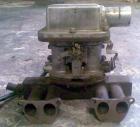
Draw Thru
Suck-through setups are simpler and more fool-proof than blow-through.
SU-type carburetor
 album
album 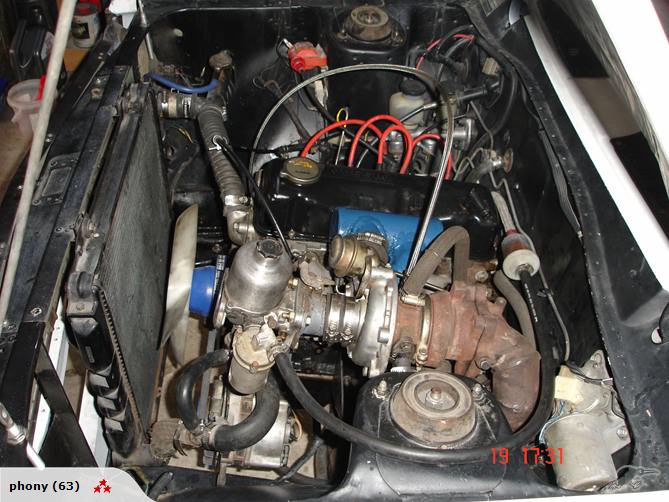 album
album
Turbo kit with Stromberg carburetor (Datsun L-series engine)
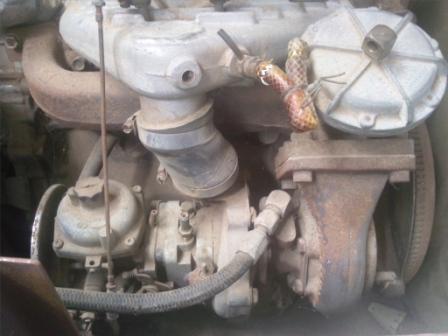 album
album 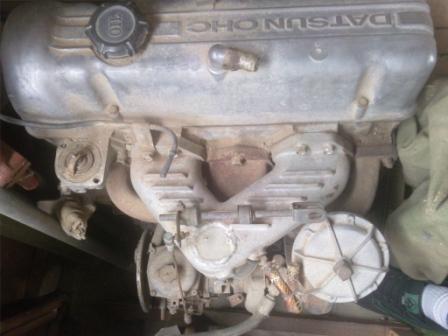 album
album  album
album  album
album
Spark Curve
The more compression, the less advance the engine can handle.
- In the distributor, weld the advance slots partially to limit mechanical advance
- Keep the stock vacuum advance (it will have no effect under boost)
- Connect vacuum advance up directly to manifold. This will help idle and starting out under low throttle, but the vacuum advance will have no effect under boost
- Set initial timing at lower than normal, say 3 degrees or 0 degrees
- In the distributor, weld the advance slots partially to limit mechanical advance. For example, maximum advance at 16 psi boost: 23 degrees
Better than all this is to use a fully programmable ignition system with a crank trigger. MegaSquirt and other ECUs can provide initial timing, limited full timing, timing under boost and even retard under boost and compensate for high temperatures.
Consequences of too much spark advance:
cracked pistons, broken ring lands
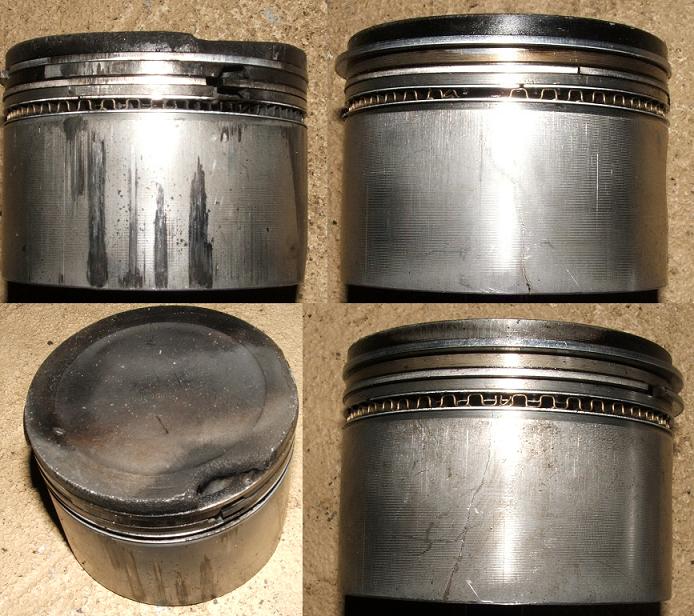

Fuel pump
- Stock fuel pump is good for draw-through setup. It's not enough for a blow-through setup, as 2.5 boost would overpower the fuel pressure
- Using a low-pressure (15 psi) electric pump oughta be good for a 10-12.5 psi boost.
- Needle and seat has trouble holding more than 10 psi fuel pressure. Better to use a secondary 15-psi pump to cut in only when needed.
- Best setup is to use a rising-rate regulator with a high-psi pump. Excess fuel is returned to the tank
Malpassi rising-rate regulator
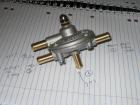
Turbochargers
See main article: Turbos
- T3 is pretty big for an A12. Needs high rpm, head work, etc
- Mid-80s Nissan Pulsar turbo (E15 engine) has integral wastegate
- go_the_datto actually tried Daihatsu diesel 1.0 turbo on A12. Good response in lower rpm ranges. Two make better twin-turbo application for A12
Here is some helpful info on everything from how a turbo works to choosing the right turbo for your engine based on compressor maps Turbo Tech
Flange
Flanges are different to suit each turbo style. For example T3 pattern requires a T3 flange some of the common types are T25/28 ,T03,T04, then there is open and split pulse
Diesel vs. Petrol Turbos
Barpk: The main difference between a petrol and diesel turbo is its seals. Diesel turbos don't have positive seal turbo seals, which means that if put it in a suck-through system they can leak oil under extreme vacuum, which happens when throttle is closed. This is not a problem in a blow-through system.
Boost pressure
- 6-7 psi is what a lot of OEM applications use.
- 10 psi should be possible with a stock A12/A14
- 14.7 lbs gives theoretically double the airflow so max. power would be about 2x stock, but this isn't actually the result. The reason is that the stock induction and exhaust system won't flow this much air under pressure. However, the low rpm torque could approach 2x (at about 2250 rpm) if a small turbo is used. So a 130hp turbo engine will have much more performance than a 130hp NA engine
- 1986 Honda 1.5 liter ran boost of 4.0 bar - that's 300 bhp ... per cylinder ... with special fuel
Induction and Exhaust
Obviously, for more airflow, a higher flowing carb, intake, heads (ports and valves) and exhaust system is beneficial. Supercharging will increase power on a stock engine, but increasing the airflow capability of the engine will bring your blown engine to its full potential
Exhaust Manifolds
The stock manifold may be used with a J-pipe for mounting a turbo. But a more direct mount is more efficient (allows more power).
Direct Mount exhaust manifold
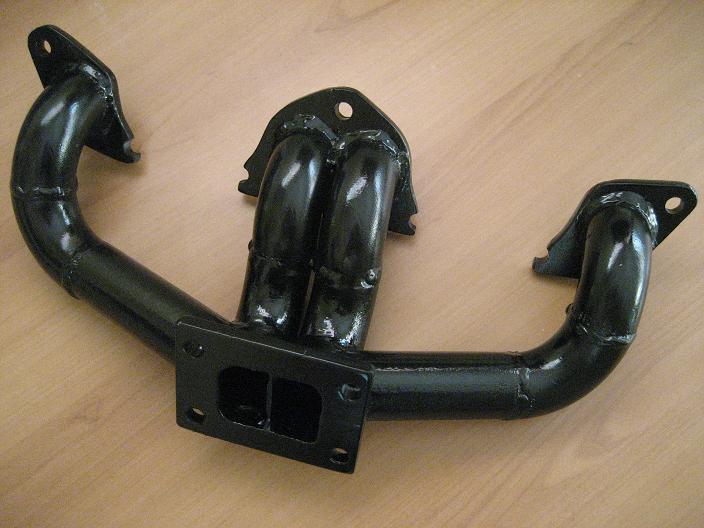 album
album
Stock Manifold with J-pipe
 album
album
This factory A14 forklift exhaust manifold might be useful:
 album
album
Exhaust manifold idea
 album
album
Big bore 1.5 inch mandrel bent steam pipe with HPC coating
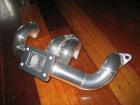

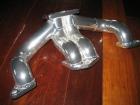
Intake Manifolds
The stock inlet manifold may be used. But obviously a larger one makes for more HP.
See main article: Turbo Inlet Manifolds



Factory Turbo Systems
Might you spend less money and get more horsepower and reliability by swapping in a factory turbo motor?
Nissan Turbos
 Z18T. See Z-series Engine Swap
Z18T. See Z-series Engine Swap
 CA18DET. See CA-Series Engine Swaps
CA18DET. See CA-Series Engine Swaps
 SR20DET. See SR engine swap
SR20DET. See SR engine swap
Toyota 4A-GZE
See main article: Toyota 4A engine
4A-GZE supercharged. Some use this motor and its fuel system and computer for a turbo setup although simply replacing the cast pistons with forged items in a 4A-GE will yield the same result (except that an aftermarket ECU will be needed). The advantage over the supercharger is that boost can be variably controlled using and adjustable wastegate or boost controller. A supercharger has a fixed design boost, although aftermarket overdrive pulleys are available. They don't like to be spun more that around 8000 rpm as the teflon coatings on the roots can melt.
Mazda Wankel Engine – Turbo
 Mazda 13BT. See Mazda rotary engine swap
Mazda 13BT. See Mazda rotary engine swap
Mazda piston Engine – Turbo
references: regarding Turbocharging A12
Builds
slam1024
slam1024 added a turbo
* 1973 Datsun 1200 2-door sedan * Custom manifold with runners from Tercel * stock SU blow-through setup from 1.3 liter MG Metro Turbo
kegs
Turbocharged A15 Twin Dellorto DHLA 45 carburetors on Redline manifold Custom airbox hat Garret A/R 48 turbo Intercooler from 200SX 2.5 inch dump pipe Liverpool Exhaust
fat910
Unmodified A12 short block 8 to 10 pound boost hi flow garrett t2 custom hat and weber carb custom sump vl turbo fuel pump with malpassi fuel reg saab turbo bov
It is easier to build up a 120Y engine instead of a 1200 engine as the alternator is not on the exhaust side
Empson
A series suck through turbo setup by James Empson (twitch@bigpond.com) 2008/05/01 Datsun B10 coupe
The turbo is an IHI - RB6, originally off a mitsubishi Galant 2 litre. the exhuast manifold is off an A15, with a flange welded onto it. The inlet manifold is suited to an Oval port head, the SU is a 1.5 inch.
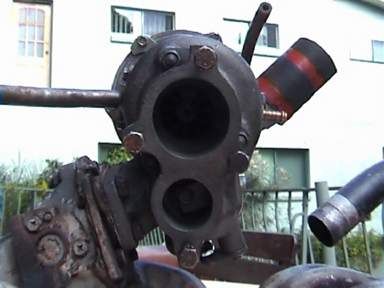
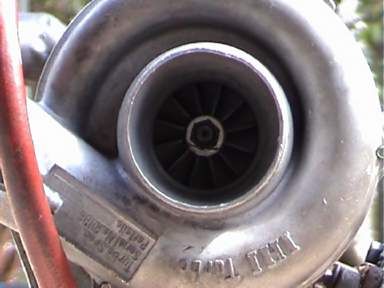

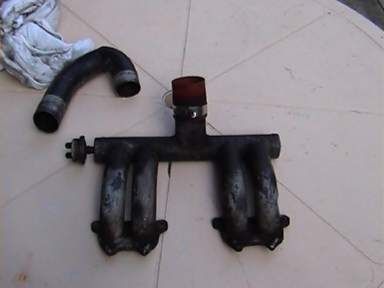
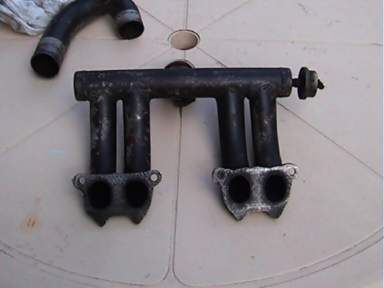

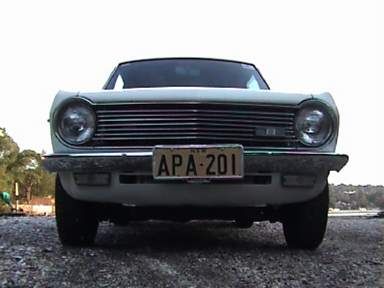
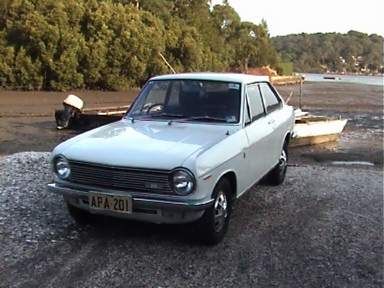

datsonovic
Zenith-Stromberg 1.75 with T04 turbo
oan78
A12 Sedan with Weber and Hitachi turbo
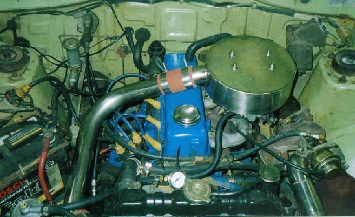
A12 wagon with 175 Stromberg and Mazda 20B turbo
 album
album
rice
For maximum boost, use a large turbo. Lag is heavy, but still operable.
* Drawthrough * 45 Weber DCOE carburetor * T4 turbo @ 10 psi * Compression ratio: 8.2:1
Photos
See Turbo Manifold Photos Turbo Photos 1 Turbo Photos 2 Intercooler Photo Index

![[Datsun 1200 encyclopedia]](/wiki/upload/wiki.png)

